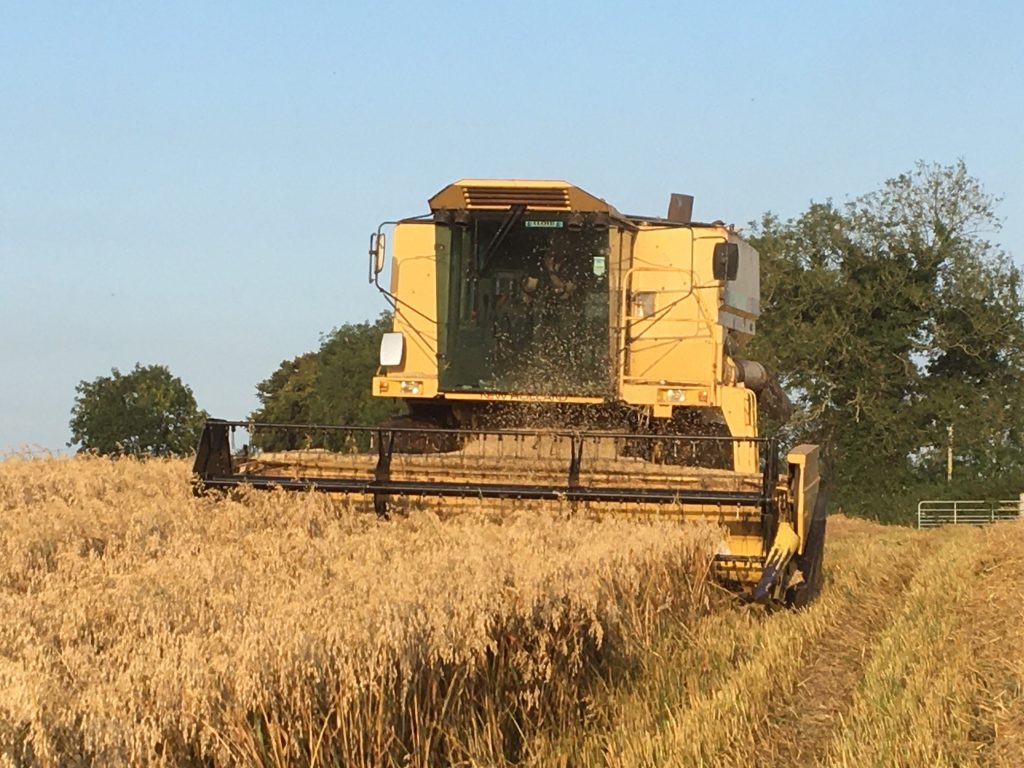Beef and Sheep Farmers look at options in a climate of rising costs
March 23, 2022
Rising costs of fertiliser and meal were the hot topic of discussion at Business Development Group 94’s meeting last week, kindly hosted by George and David Caldwell, Magherafelt. With input costs constantly on the rise, it was important the group discussed and viewed the impact these rising values would have on the resulting Gross and Net Margin of their businesses.
Following a well led and informative suckler farm tour by George and son David, the group then returned to the shed to talk numbers. Using a Gross and Net Margin Calculator, CAFRE Senior Beef and Sheep Adviser, John Moore was able to show the impact these increasing input costs would have on the resulting margins. The ‘What If’ scenario was based on an animal live weight of 600kg and a 55% Kill Out, leaving a deadweight of 330kg. The original sale price was 336p/kg. The group members then discussed varying fertiliser purchase prices and altered the calculator to look at the end result. These fertiliser prices varied from members who had bought early last autumn to members purchasing only recently so the variance was quite large. Meal price was also altered to current day prices and then altered again to future predictions after discussing the current grain markets. Once figures had been agreed upon, the sale price was increased to show the group what was required from the factory to breakeven. It must be remembered however that margins are calculated on annual averages and so whilst using current spot prices can show the extent of current impact they may not reflect the eventual margins obtained.
Current grain markets and future meal prices have tempted many farmers to consider growing cereals for the first time. CAFRE Arable Adviser, Jonathan Brown was at the meeting to highlight some points for consideration. He first asked farmers to consider their ground availability and type against the conditions required for the desired crop and yield. Crops enjoy a medium, well-drained soil and ideally the seed bed should be fine. Poorly managed seedbeds can lead to reduced establishment. In a year of high forage costs, farmers in the group pointed out a vital deciding factor – could you afforded to take this land out of a grazing rotation for a considerable length of time? John Moore advised farmers to plan their stocking rate and their grazing rotation to establish if this was the case.

This then led the farmers to ask, what do I want this crop to do for me? If it is to be processed for home use check the availability and price of other straights to make up the required ration; do you have the storage capacity to keep straights on farm for future mixing and the ability to home mix?
Jonathan then carried on to show costings for previous year’s spring barley to provide the farmers with a blueprint gross margin. Following a discussion on the increasing input costs he concluded by encouraging farmers to consider what the intended cereal crop will do for you and your enterprise. Will the removal of the grazing area fit in with your livestock carrying capacity and finally, costs associated with cereal production are also rising sharply, so plan carefully.
In many cases and on many livestock farms across the country, the greatest benefit in terms of extra energy and protein will be gained from improving the energy, protein and yields of grass and forage crops. Whether that be grazed grass, grass silage or other conserved forages. There is great risk associated with stepping into the field of growing a crop that you as a farmer have very little knowledge about – and hence greater chance of going wrong. Focusing on forage crops that you can grow well will reduce the risk and improve the quantity and quality of good feed available for your animals.
